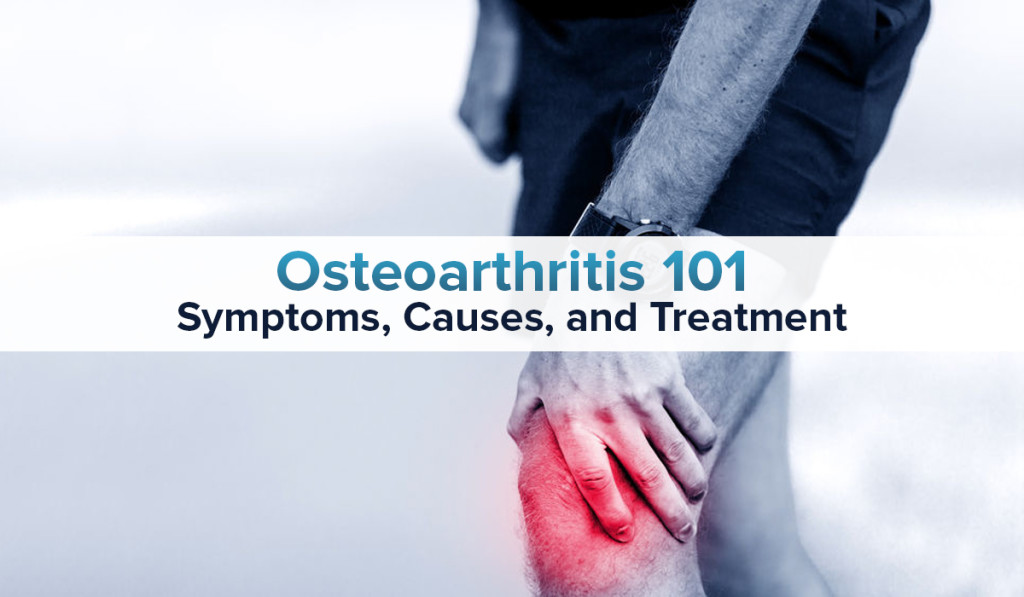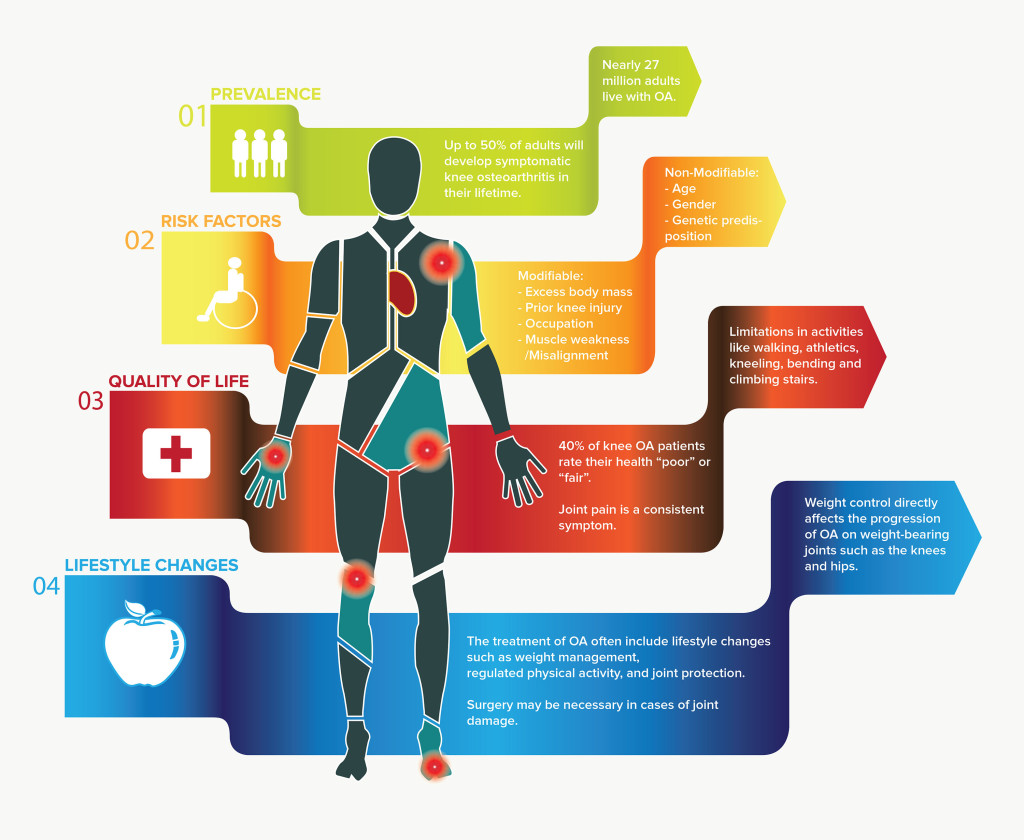Osteoarthritis 101 – Symptoms, Causes, and Treatment

Osteoarthritis is the most common type of arthritis, affecting millions of people around the world. According to the Osteoarthritis Research Society International (OARSI), osteoarthritis is a disorder of the joints that causes inflammation and affects the body’s ability to repair injuries. Osteoarthritis can start when your body’s repair processes cannot keep up with the amount of stress placed on your joint. If your joints don’t get the exercise they need to stay mobile and strong, they will start to adapt to these conditions, making them painful to move and less tolerant
to activity. It can be challenging, but it’s important to find the balance between too much and too little physical activity; helping to keep your joints healthy as you age.
Osteoarthritis can involve:
- Cartilage loss – Loss of the protective cushioning and lubrication between bones in your joints that allows you to move easily and pain-free.
- Bone remodeling – The process where bone tissue is broken down and new bone is built.
- Bony overgrowths – When the body creates extra bone to stop movement in the joint.
- Joint inflammation – When the body’s immune system thinks that its healthy cells are foreign, so it attacks its own healthy tissues.
- Range of motion – Osteoarthritis can cause a gradual loss of mobility in your joints over time, making everyday activities more and more difficult.
Symptoms of Osteoarthritis
Osteoarthritis ranges from mild to severe and most commonly affects the knees, hips, hands, and spine.
Here are some symptoms:
- Joint pain, aching, and discomfort
- Inflammation and swelling
- Joint stiffness, especially after a period of inactivity
- Reduced flexibility, resulting in reduced range of motion
- Grating sensation during movement
It’s important to see your doctor or physiotherapist as soon as possible after developing symptoms. By getting treatment early and maintaining a healthy lifestyle, you can prevent or slow down how fast the condition progresses.
Diagnosis
Your health care professional will be able to diagnose osteoarthritis based on a physical exam, medical history, and imaging tests.
Causes
Anyone can develop osteoarthritis, but there are a number of factors that can increase your risk of developing the condition. Some of these risks you can decrease and others are beyond your control.
Risks You Can Change
- Overweight or obese – Excess body weight puts more stress on the joints, which can make the cartilage in your joints wear down faster.
- Previous injury – A past trauma can increase your risk of developing osteoarthritis, including sports or occupational related injuries from hard labor, repetitive movements, bending, and/or heavy lifting.

Risks You Can’t Change
- Age – Your risk of developing osteoarthritis increases as you age due to wear and tear over time.
- Genetics – Your genes can make you more predisposed developing the condition.
- Bone deformities – Certain conditions such as bone misalignment and different leg lengths.
Treatment
There are a number of treatment options available and your health care professional can determine the best treatment plan for you.
- Physical therapy – Following an exercise program can strengthen surrounding muscles, increase mobility, and reduce pain.
- Braces or shoe inserts – Treatment can include braces to help keep the joint stable and shoe inserts to correct imbalances.
- Medication – Acetaminophen can provide short term pain relief and a non-steroidal anti-inflammatory drug like Ibuprofen or Aleve can also help reduce inflammation.
- Injections – Cortisone shots or lubrication injections can help relieve pain.
- Surgery – Surgical options include joint replacement and bone
realignment.
Prevention
The condition generally gets worse over time, but preventative measures such as maintaining a healthy weight and regular exercise can help prevent the onset of osteoarthritis or reduce the symptoms of an ongoing condition. By maintaining a healthy body weight through diet and exercise, less stress is placed on your joints over time.
Exercise is a great way to manage joint pain. Watch this great video from the American Council on Exercise for top exercises for pain-free knees.
General Health Tips for Osteoarthritis Prevention
- Stay active every day – If you can’t commit an hour or half an hour to exercise, break up your workout into 15 minute chunks throughout your day.
- Have fun! Exercise doesn’t have to be boring; You’re more likely to stick to a fitness routine if you enjoy it!
- Eat healthy – Eating a healthy diet (and less processed foods) can help reduce the overall level of inflammation (stress) in the body.
- Eat the rainbow – Fruits and vegetables are high in anti-oxidants that help reduce inflammation in the body. Darker colored fruits and vegetables tend to provide the best health benefits.
- Drink more water – Since thirst is often mistaken for hunger, drink more water throughout the day to help keep your appetite in check.
